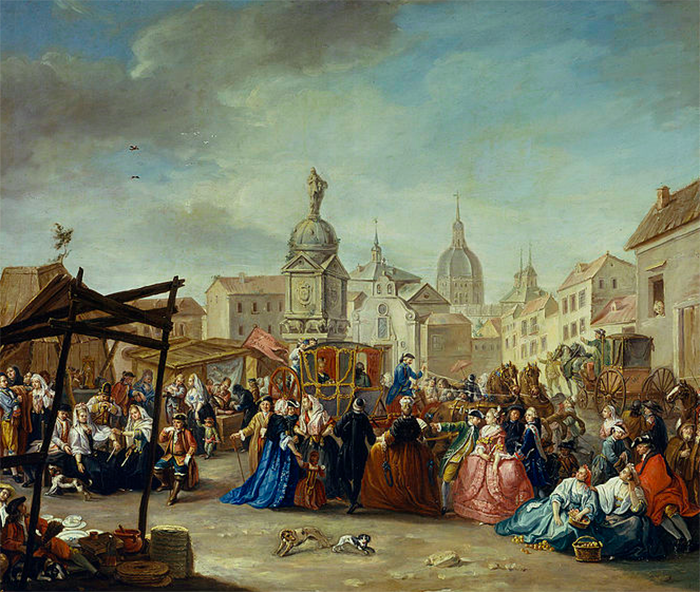Spanish Inquisition pornography investigation provides key to how ordinary Europeans read

LAWRENCE — A little-examined Spanish Inquisition investigation into pornography could shed light on how ordinary Europeans read literature during the Enlightenment.
 "Everyone talks about how people read in the 18th century because there was a boom in printing," said Marta Vicente, a University of Kansas associate professor of history and women, gender and sexuality studies. "But there is no evidence of how ordinary people actually read, so this case is a unique window into how non-educated people accessed literature. Plus, it's a fun story."
"Everyone talks about how people read in the 18th century because there was a boom in printing," said Marta Vicente, a University of Kansas associate professor of history and women, gender and sexuality studies. "But there is no evidence of how ordinary people actually read, so this case is a unique window into how non-educated people accessed literature. Plus, it's a fun story."
Vicente's analysis of a Mexican priest disciplined for reading the French novel "Le Portier des Chartreux" appeared recently in the journal Comparative Literature. She began researching the Inquisition case in 2000 in the Archivo Histórico Nacional Inquisición in Madrid and found that very few English-language scholars had focused on its details, nor had scholars addressed how commoners read the novel.
In December 1785, Don Cayetano de la Peña, the vicar general of Madrid, ordered the arrest of two Mexicans: a priest, Juan José Guerra, and his roommate, José Mariano Beristain, a theologian, on charges of indecent behavior, including reading the alleged obscene illustrated French book. Authorities accused Guerra of failing to set an example of Christian virtue of a man of the cloth.
The men were staying at a guesthouse in the heart of Madrid, and their landlady and her houseguest had reported the two Mexicans to the Inquisition along with accusing the men of not attending Mass or using the rosary as well as bringing prostitutes into the house.
Scholars have argued that works like "Le Portier des Chareux" were politically dangerous because their obscene passages were a venue to discuss forbidden philosophies and also to ridicule and criticize the Catholic Church — which gained the attention of the Inquisition. Vicente said a closer analysis of how Guerra and Beristain among others read the novel reveals that for most Spanish readers, reading was not a process by which they necessarily deciphered a meaning the author intended.
The author of "Le Portier des Chartreux" may have intended to attack the Catholic Church or spread radical philosophical ideas, but the reality was that the members of the guesthouse who read the novel appropriated the text and interpreted it in their own way, she said.
According to the Inquisition documents on the case, none of the readers of the novel paid attention to the philosophical content in "Le Portier des Chartreux," as they often just joked about scenes or discussed the literature events, she said.
Enlightenment literary scholars have tended to consider educated readers as those who favored solitary reading and more intellectual analysis while ordinary readers read as part of a community.
However, in this case, readers of different backgrounds, educated and not, responded to the contents of the novel and the obscene illustrations in similar ways, whether they were laughing at the story or denouncing its excesses.
"The priest and friends missed the philosophical messages of the novel — not because they weren't smart enough, but because they were not interested," Vicente said. "The context in which they read the novel invited laughter and jokes rather than a complex study of the philosophical content of the work."
The case also illustrates how the Inquisition especially in trying to censor materials at this stage was less and less effective because ordinary people were still getting their hands on these types of books anyway, she said. José Mariano Beristain, one of the accused, a well-known Mexican theologian, was not severely punished either, possibly because of his status in the church, she added.
From a literary perspective, the case could help open up new avenues of research on how ordinary readers began to consume literature as it became more readily available in printed form.
"This was a major book in the 18th century, but we see that it was sold outside of France, where it was one of the biggest best-sellers," Vicente said. "The case also shows how people were reading this book and how reading this forbidden literature was something organic that you could not fix some type of class model onto. It's very open to interpretation."
Image: "Madrid Fair in Cebada Square," Manuel de la Cruz Vázquez .